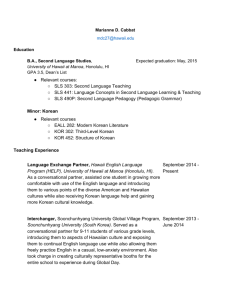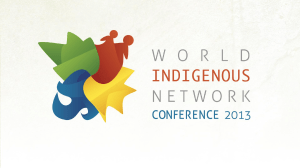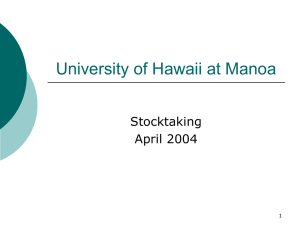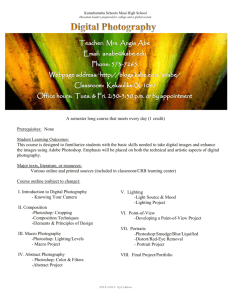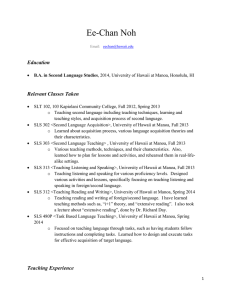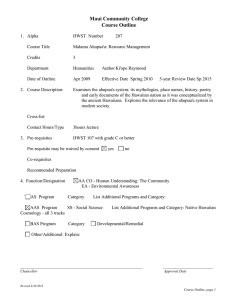Manoa Valley Ahupua'a
advertisement
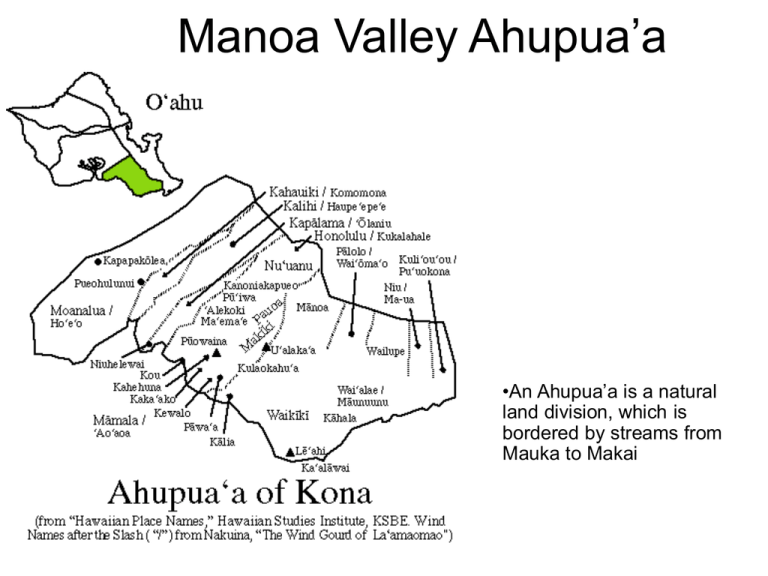
Manoa Valley Ahupua’a •An Ahupua’a is a natural land division, which is bordered by streams from Mauka to Makai Typical Ahupua’a Ohana: Family Life Hawaiian tradition • recognizes that people are descendants of the kalo plant Ohana comes from Kalo Makua = parent Oha (sprout) = child QuickTime™ and a TIFF (Uncompressed) decompressor are needed to see this picture. Ohana were guided by family spirits called ‘Aumakua They were ancestors of the family who provided guidance and advise They took on forms of nature such as mano: sharks (most revered), honu: turtles, pueo: owls Illustrates how Hawaiians are connected to nature, their surroundings A premier of indigenous learning Indigenous •Spiritual Learning and secular worlds are connected •Knowledge embedded in cosmology •No clear distinctions between intangible and physical elements •Knowledge is holistic and cannot be separated from land, resources, nature • Early education • • • • • • • Strict discipline What they needed to learn they learned at home Child’s age based on his physical abilities Chores based on child’s strengths, size 2 year old = carries water 6 year old = carries coconuts 10 year old = carries sibling Pre Contact Education • Education a child received depended on birth status: • Ali’I children had kahu (tutor) - they learned about leadership, royalty • Maka’ainana children taught by kupuna (grandparents) -- they learned about legends, their families kapu (guardian) Pre Contact Education •Goal: teach children to be responsible members of society • Content: • • • • Chants Hula Genealogies, Legends • Formal ways of learning: • Imitation • Oral history • Observation • Informal ways of learning: • Direction from kupunas • Play • Older boys learned as they worked side by side with the men. • They learned to plant, fish, make poi, prepare food for imu •Older girls worked with the women •They learned how to make baskets, mats, and gourds for carrying food and water •They took care of the children, cleaning, collected shells, seaweed, etc. Post Contact •First material printed in Hawaiian was by missionaries -- contained sentences and spelling words from the Bible •1830, over 1,000 schools -- taught by native teachers, under the guidance of the missionaries •Education in the Hawaiian language •Ho’ike -- a quarterly exam of students -- which were festive occasions attended by ali’i where students demonstrated what they had learned Post Contact 1900 •Children ages 6 to 15 had to attend school •No longer run by missionaries but by state government •Underlying problem: why educate people if they are just going to work on the plantation? •Same problems today existed then: too little tax money supported education -- a federal commission found that too little tax money supported education - the old Territorial school which taught teachers became part of the new UH Manoa References • • Williams, J. S. (1997). From the Mountains to the Sea: Early Hawaiian Life. Kamehameha Schools Press, 1997 • Kamehameha Schools Hawaiian Studies Institute (1994). Life in Early Hawaii: The Ahupua’a, 3rd ed. Available online at, http://kspress.ksbe.edu • Chapin, H. G. (1999). Hawaiian Historical Society. Available online at http://www.hawaiianhistory.org/index.html • Menton, L. K., & Tamura, E. H. (1999). A History of Hawaii, 2nd ed. Curriculum Research & Development Group, Honolulu, HI • Kamakua, S. M. (1991). Tales and Traditions of the People of Old. Bishop Museum Press, Honolulu, HI 1991 • Kamakua, S. M. (1964). The People of Old. Bishop Museum Press, Honolulu, HI 1964 Manoa in 1924 Manoa in 1936 Manoa in 1949 Manoa in 1969 Manoa in 1987 “Long Range” Development Plan
